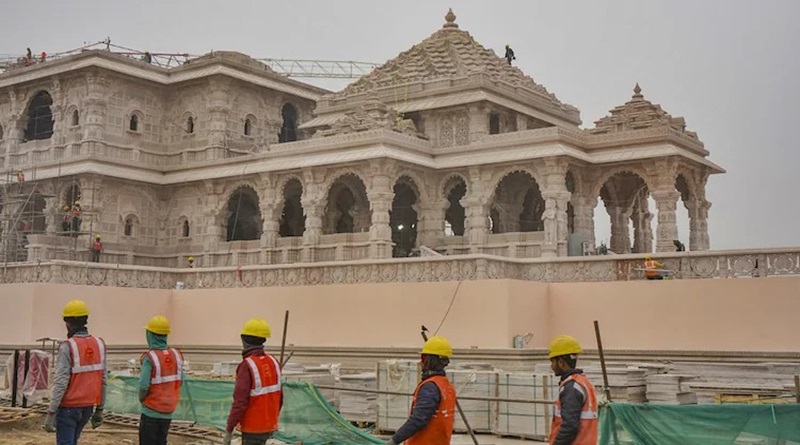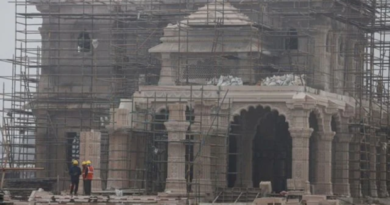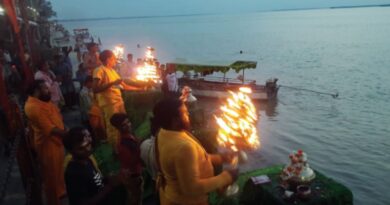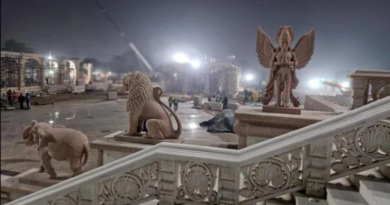The Science Behind the Enduring Legacy of Ayodhya Ram Mandir: Technology Secures the Temple’s 1000-Year Existence.
New Delhi: The forthcoming inauguration of the Ram Mandir, a magnificent edifice honoring Lord Rama in Ayodhya, marks the convergence of revered tradition and cutting-edge technology. Scheduled for consecration on January 22, this temple is not just a place of worship but a testament to architectural brilliance and longevity. Let us delve into the meticulous construction process that has gone into bringing this grand vision to life.
THE ENGINEERING BEHIND AYODHYA RAM TEMPLE
Leveraging the Expertise of Larsen and Toubro and Tata Consulting Engineers Limited, Ram Temple Stands as an Epitome of Engineering Excellence
The realization of the remarkable Ram Temple owes much to the strategic planning and ingenious construction techniques executed by Larsen and Toubro, alongside the proficient management of Tata Consulting Engineers Limited. The temple’s architectural design draws inspiration from the timeless Nagara style, featuring an extraordinary array of 360 stone pillars, deviating from contemporary preferences for materials like iron, steel, or cement.
This deliberate departure resonates with the temple’s pursuit of enhanced seismic resilience, as stone offers superior longevity and durability. The decision to employ stone aligns with the larger vision of constructing an enduring monument. Notably, the temple boasts an exceptionally robust foundation that showcases remarkable scientific innovation. Resting upon a 15-meter thick layer of rolled compacted concrete, consisting of 56 intricately compacted layers blended with fly ash, dust, and chemicals, the temple’s base attains unparalleled strength.
Furthermore, a granite plinth, spanning 21 feet in thickness, forms an impervious shield against moisture, safeguarding the temple’s structural integrity. Comparable to the pillars supporting mammoth bridges traversing mighty rivers, these foundational elements fortify the temple against seismic occurrences. Overcoming unique challenges encountered during construction, such as maintaining the ideal temperature of self-compacting concrete at 18 degrees below ambient temperature during pouring, required resourcefulness.
Ingenious solutions emerged, ranging from the utilization of on-site ice crushing plants to meticulously timing the filling of the foundation during the cooler hours of the night, mitigating the impact of external temperatures. Crafting this extraordinary structure demanded the collective expertise of a dedicated team comprising 150 accomplished engineers and thousands of industrious workers, each contributing their skills to transform a vision into a tangible reality.

SCIENCE COMES TO HELP
The temple’s construction incorporates a design that can withstand earthquakes of magnitude 6.5, ensuring its longevity without the need for repairs over the course of 1,000 years. To achieve this, the engineering team undertook a meticulous process. They studied the historical seismic activity in the region ranging from Ayodhya to Nepal and replicated it in laboratory simulations. The insights gained from these simulations informed the development of a unique foundation for the temple.
Following the guidance of the esteemed Indian Institute of Technology in Chennai, the engineers excavated the ground to a depth of 15 meters, effectively removing the clayey topsoil. In its place, a specially formulated re-engineered soil was introduced. This re-engineered soil possesses the remarkable ability to solidify into a stone-like substance within a span of 14 days. Carefully and methodically, the construction process involved the placement of 47 layers of this re-engineered soil, further enhancing the temple’s structural stability.
Through this innovative approach, the temple’s foundation attains exceptional strength and resilience, enabling it to resist seismic forces and endure the test of time. The meticulous planning and implementation of these construction techniques highlight the fusion of ancient faith and modern science in the creation of this awe-inspiring temple.
Engineers also looked into flooding records of the region and confirmed that the level on which the temple is being constructed is safe from any type of floooding .
Furthermore, the temple features a unique noon reflection mechanism, designed by CBRI, which directs sunlight onto the idols’ foreheads at noon during Ram Navami, enhancing the spiritual experience for devotees.
The newly constructed structure is being hailed as the amalgamation of spirituality with scientific innovation.






Pingback: รับทำเว็บไซต์
Pingback: ลวดสลิง
Pingback: Winchester firearms for sale
Pingback: aroundtravel
Pingback: https://shbet.tours
Pingback: https://vhnbio.com
Pingback: โคมไฟ
Pingback: คาสิโนออนไลน์ sagame
Pingback: protein shake
Pingback: PLAYTECH SLOT ค่ายเกมระดับโลก
Pingback: Accounting Phuket
Pingback: adipex p donde comprar
Pingback: ทำความรู้จักค่ายเกม Joker Slot
Pingback: คู่มือเล่นสล็อต Lsm99BET
Pingback: Lsm2play ทางเข้าเว็บแทงบอลเว็บตรง
Perfectly pent written content, Really enjoyed examining.
Pingback: Buray脹 g旦r端nt端le
Pingback: xbet99 เหมาะสมกับ คาสิโน ผู้เล่นคนไหนบ้าง ?
Pingback: กล้องประชุม
I like what you guys are up too. Such smart work and reporting! Carry on the superb works guys I¦ve incorporated you guys to my blogroll. I think it’ll improve the value of my web site 🙂
I have been exploring for a little bit for any high-quality articles or blog posts in this kind of space . Exploring in Yahoo I finally stumbled upon this website. Studying this info So i?¦m glad to exhibit that I’ve an incredibly excellent uncanny feeling I discovered exactly what I needed. I such a lot certainly will make sure to do not overlook this site and provides it a glance on a relentless basis.
Pingback: fox888
Pingback: sa casino gaming เปิดให้บริการ คาสิโน อะไรบ้าง ?
Pingback: วิธีเพิ่มยอดวิว
Pingback: Play with us
I’m impressed, I must say. Really rarely do I encounter a blog that’s both educative and entertaining, and let me tell you, you have got hit the nail on the head. Your thought is outstanding; the issue is something that not sufficient people are speaking intelligently about. I’m very completely happy that I stumbled throughout this in my seek for something regarding this.
Pingback: หวยดีใจ เว็บหวยออนไลน์ บาทละ 1000
Pingback: essentials fear of god
Pingback: 20รับ100
Pingback: game from Greentube